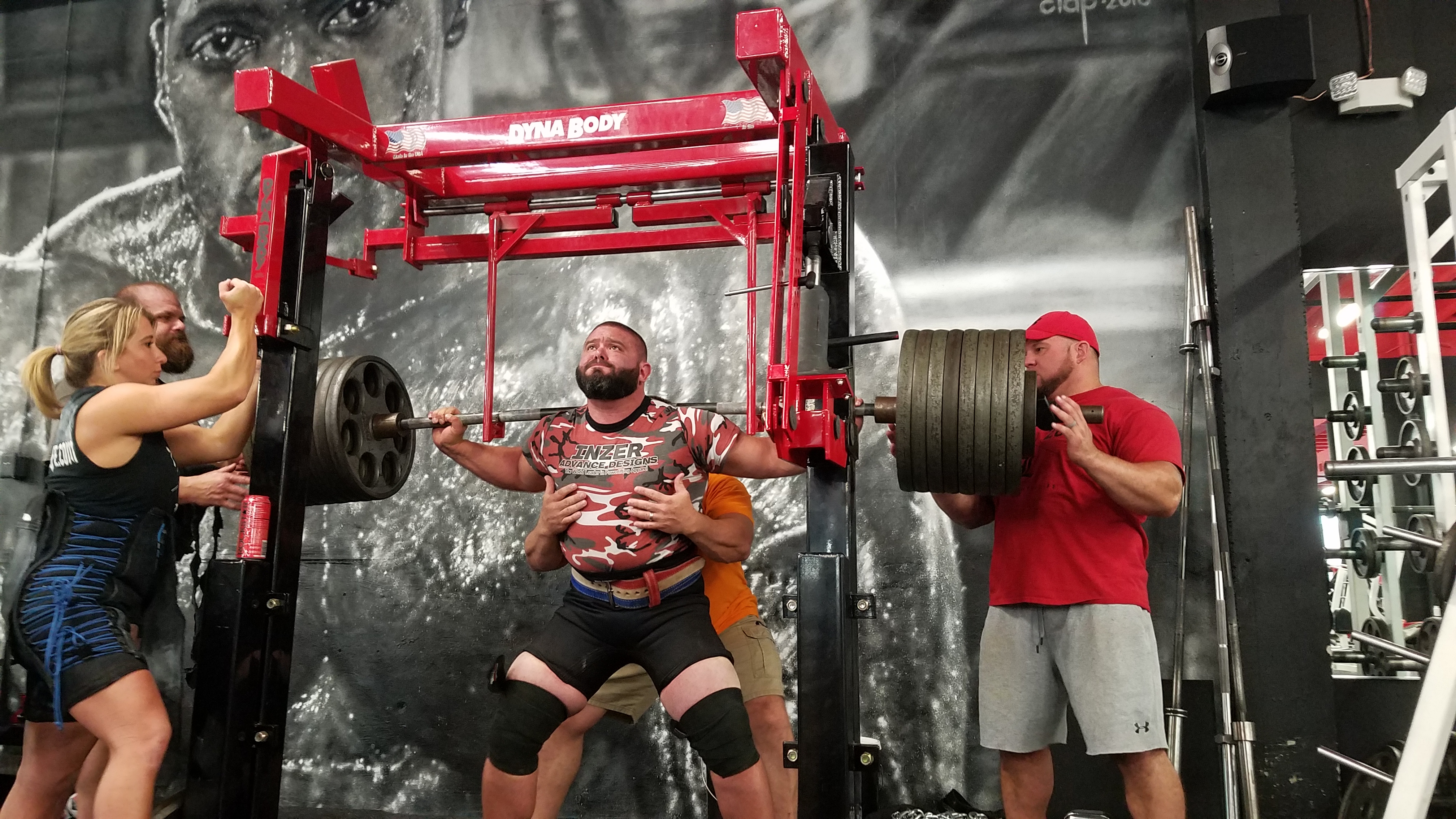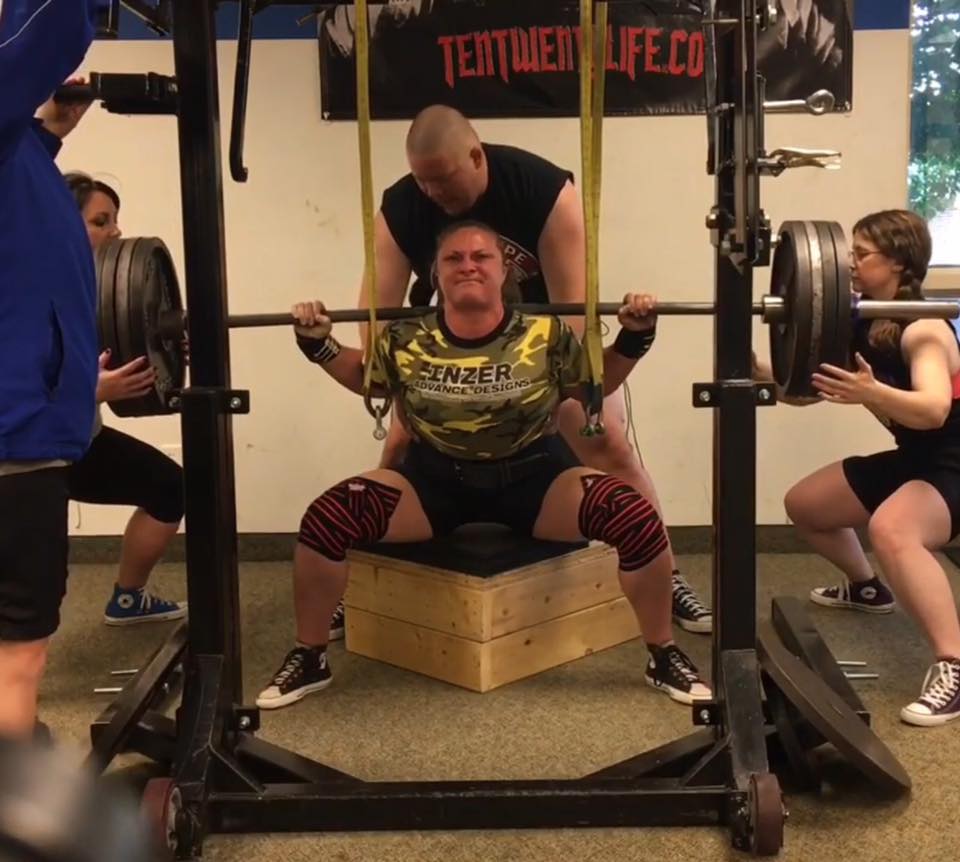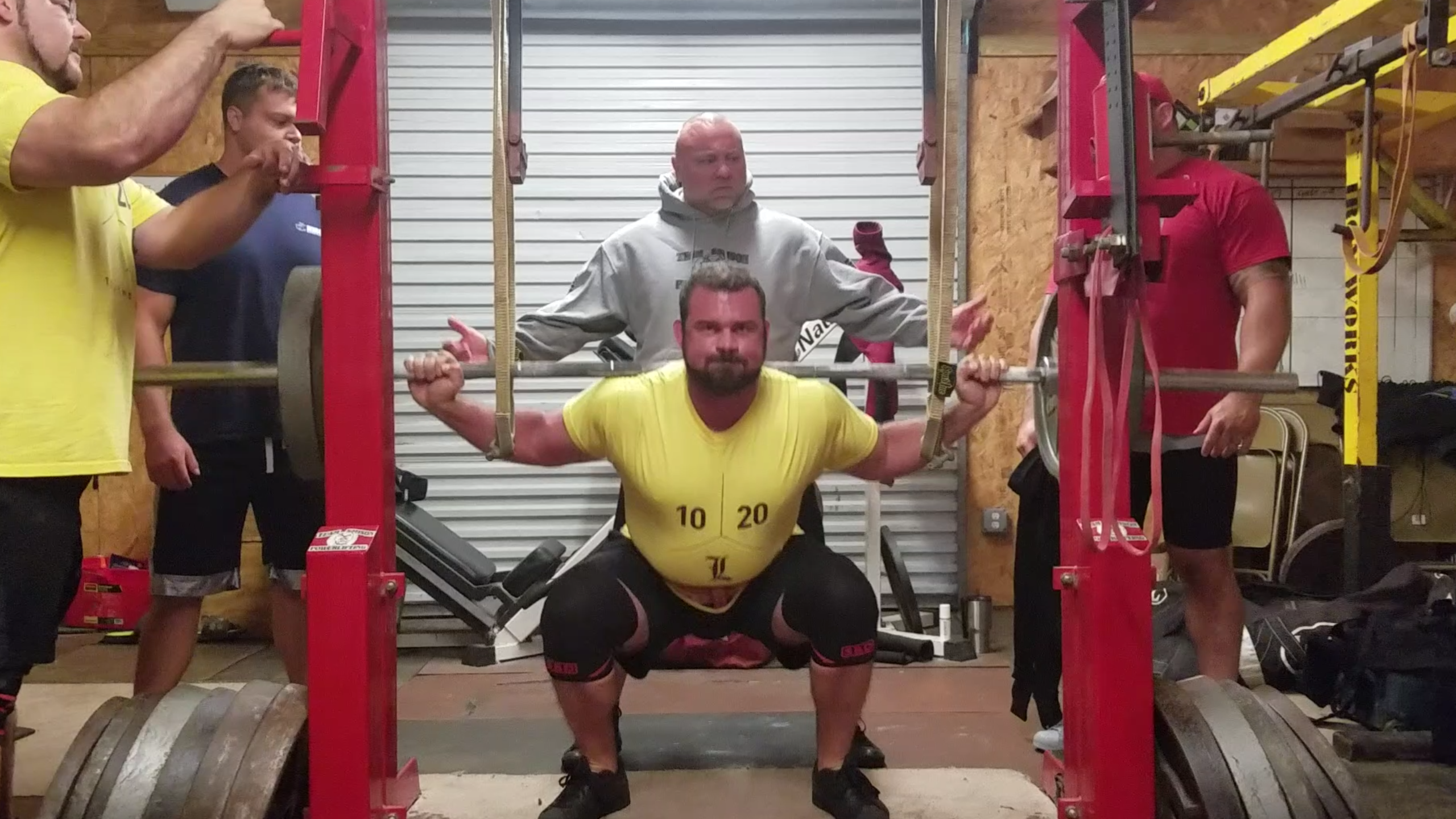
22 Jan The Monolift Un-rack
By Brian Carroll & Jason Pegg
What is a monolift and why?
Depending on where you lift and what you have access to, you may likely have to walk squats out. This is, unless you are lucky and have access to a monolift.
The monolift is a squat apparatus that has gained popularity over the last 20 years which conveniently allows you to set-up in your squat stance and pick the bar up and squat. This is a much easier, and in my opinion, a much safer option for squatting. Since the “walkout” aspect is eliminated, so is a lot of the danger and potential mishaps. (NOTE: this is an informational piece on the mono, not a bash on the traditional squat rack. I have nothing against those that want to walk squats out nor do I oppose it. I just suggest the use of a monolift no matter if you are ‘staying in to squat, or walking it out’.) By the way, the mono can also be used much like traditional squat rack for walked out squats. This is good for a couple reasons; the mono gives the ability to use safety straps and a more stable squat apparatus in contrast to many squat stands (which are quite wobbly and archaic).
Don’t underestimate the transition
Squatting in a monolift does take practice, proper technique and preparation – make no mistake. It’s not as simple as un-racking then squatting. If you plan on competing in a federation or lifting in a gym which utilizes one, I highly suggest you practice in one first. Typically, an adjustment period is usual for those used to the squat walkout as it’s been part of their “squat” for years. Picking up a loaded bar, walking it out, all while being able to the ‘feel it out’ and adjust into a consistent squat stance that is comfortable – it’s tradition and for some, ritualistic. But, with a little time and practice, many realize, and eventually-embrace this safer, more efficient way to squat.
Maximum stiffness – start to finish during the squat
With a monolift, you can create maximum stiffness and tightness without having to worry about walking out a weight (duh, I know). It’s quite difficult staying 100% tight while taking steps with a loaded bar on your back, then having enough energy to actually squat the weight! Unless you are going after a record which was done without a monolift, or the federation doesn’t offer a monolift, the question isn’t why should you use a mono, but more along the lines of why SHOULDN’T you use one?
Here is your ‘how to’ mental checklist – whether you’re a rookie or seasoned veteran:
- HEIGHT: Adjust the monolift/bar height to approximately mid-chest to clavicle level while under the bar, in proper squat stance and width. This is important as the height will depend on factors including width of stance. As you slide under the bar, utilize the lifter’s wedge as you start your set-up. Think white knuckles, with maximum grip on the bar each time. Your head position is fixed upon where the wall meets the ceiling.
- ANCHOR YOUR FEET IN: Corkscrew your feet into the ground, grip the floor like a monkey and set your stance appropriately. You are creating maximum tightness and priming the squat muscles even before you start the squat. This means head-to-toe, literally. It all starts with the feet, don’t underestimate this.
- HEEL TENSION: This is where you will make sure cues #1 and #2 are checked off and are a done deal. From your heels –wedge/push into the bar about 10-20% total, to ‘feel’ the bar and weight on your back. When you are locked in and tight head to toe, you are now ready to unrack the bar. You won’t un-rack until every bit of all the above is crossed off and locked in.
- THE SQUEEZE: Slowly and with powerful, but controlled effort, squeeze (don’t jerk or snatch) the bar out of the rack by driving your heels through the floor, while maintaining proper head (up), latissimus (down) and chest position (up). Stand fully erect, gripping both the barbell and floor.
- STABILIZE AND SETTLE: Before you start to descend, let the bar settle. Once settled, flex your quads (to ensure good hip hinge) and suck air into your gut, hold it, then start the squat with a proper hip hinge. Maintain the lifters wedge at all times – proper head, latissimus and chest position while slightly pushing your knees away from your midline while anticipating the ‘up’ call either from a training partner or from your inner voice.
I will say there are many different ways to go about this. My way has been established by trial and error, successfully utilizing one for over 13 years as we are lucky enough to have thee monolifts at the Team Samson Compound.
With that said, here are a few very common mistakes that we’ve seen over the years at both meets and in the gym when one is very new to the apparatus. Avoid them!
A few very common mistakes made in the mono:
- Not knowing your height or improperly setting the height and wearing yourself out even before the squat. We’ve all been or seen the lifter who wrestles with the un-rack and it saps them, sometimes it even ruins their whole day. This takes practice and preparation to get right. Remember, most monolifts are different with settings and heights differing from mono to mono. This is true even with the same make and model – always verify and double check.
- Not being locked in and loose as you prepare to un-rack. If your feet are loose and not set, not gripping the floor like a monkey – then you likely won’t have the proper stability. Don’t be the guy who picks the bar up and does a little shuffle step during the un-rack which defeats the purpose of the monolift. Practice the way you play.
- Getting on your toes or too far back on your heels. There’s an art to setting up just right and this takes repetition. Find the ‘spot’ just right for your feet and become automatic with it. Consistency is key whether setting up to take 100lb or 1000lb. Being on your toes will likely pitch you forward and strain a calf, and being too far back on your heels will have you tipping back, ready to fall over into your back spotter – which is potentially catastrophic.
- Ripping the bar out uncontrollably in a good morning position or too aggressive in general. For most, a middle of the road approach will work, controlled but aggressive. Think of the un-rack as squeezing the bar out of the rack in a very limited range of motion Anderson squat. Your back should NOT be involved other than maintaining a neutral spine and top to bottom stiffness. You should be picking the bar straight up with your quads (this comes from your heel drive).
- Not letting the bar ‘settle’ and letting it control your un-rack or even descent is very common. Too common. Being in too much of a damn hurry, for what? Pick the bar up controlled (as established) and let the bar finish whipping, rattling and shaking. Once it’s settled, then get your air and start your hip hinge. This also applies to those ‘aggressive’ lifters who shake the monolift all over the place prior to the un-rack. Wait for the bar/monolift to settle prior to even starting the unrack. Little things like this can be the difference between a good or bad lift.
Get your copy of the 10/20/Life ebook here!
Brian Carroll
Latest posts by Brian Carroll (see all)
- Protected: -Header Image Post Template 2024 - April 18, 2024
- Brian Carroll X Professor Stu McGill full interview 2024 - April 16, 2024
- Protected: -Video Post Template 2024 - April 15, 2024








Sorry, the comment form is closed at this time.